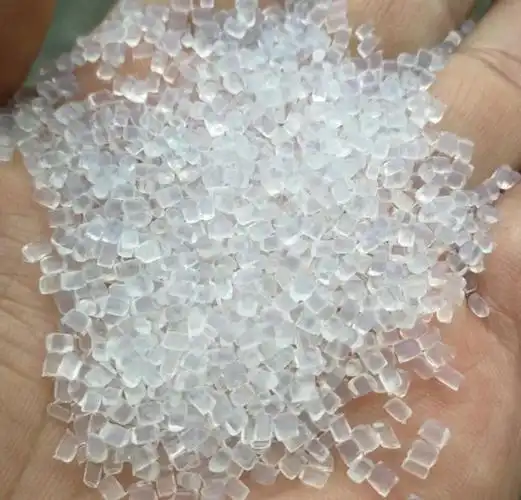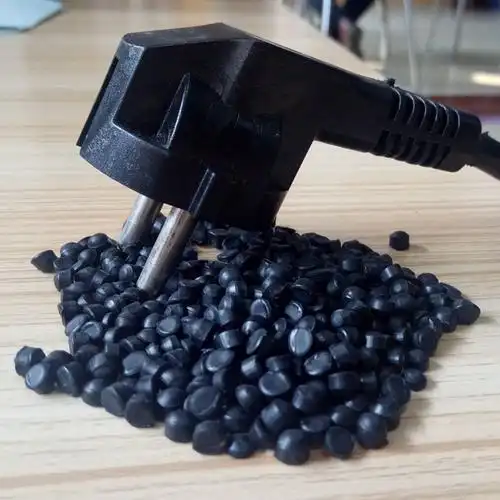Having spent nearly two decades in the polymer industry, I’ve dealt with a wide range of material quirks, and one that often catches people off guard is when TPR (thermoplastic rubber) starts “sweating” oil after being stored for months. If you’ve noticed your TPR pellets or molded parts turning greasy or sticky after four months of storage, you’re not alone—it’s a common issue that can compromise product quality and processing. Through years of trial and error, I’ve learned what causes this oil exudation and how to prevent it. Let’s dive into the reasons behind this phenomenon and explore practical solutions to keep your TPR in top shape.

Understanding Oil Exudation in TPR
TPR, a versatile material known for its elasticity and soft-touch properties, is often a blend of polymers like styrene-butadiene-styrene (SBS) or styrene-ethylene-butylene-styrene (SEBS), combined with plasticizing oils, fillers, and additives. When TPR exudes oil—appearing as a greasy film or sticky residue—it’s typically due to the migration of these oils to the surface over time. After four months of storage, this issue can become pronounced, affecting handling, processing, or end-product performance. The root causes usually lie in material formulation, storage conditions, or processing history. Here’s a detailed look at each.
Material Formulation Issues
1. High Oil Content in TPR
The most common culprit behind oil exudation is excessive plasticizing oil in the TPR formulation. Oils are added to enhance flexibility and reduce hardness, but if the oil content is too high (e.g., above 30% by weight in some SEBS-based TPRs), it can exceed the polymer’s ability to retain it over time. This excess oil gradually migrates to the surface, especially during prolonged storage.
I once worked with a TPR grade for shoe soles that had a 35% oil content. After three months in storage, the pellets were so greasy they clogged the hopper during processing. Switching to a grade with 20% oil content resolved the issue without sacrificing flexibility.
2. Poor Oil-Polymer Compatibility
Not all oils are created equal. The compatibility between the plasticizing oil and the polymer matrix (e.g., SBS or SEBS) is critical. Paraffinic or naphthenic oils are commonly used, but if the oil’s molecular weight or polarity doesn’t match the polymer, it can separate over time. Low-molecular-weight oils, for instance, are more prone to migration. I’ve seen cases where a supplier used a cheaper, incompatible oil, leading to oil exudation within weeks.
3. Additive Imbalance
Additives like stabilizers, antioxidants, or fillers can influence oil retention. For example, excessive fillers like calcium carbonate can disrupt the polymer-oil matrix, pushing oil to the surface. Similarly, some stabilizers can interact with oils, reducing their stability. In one project, a TPR batch with 15% filler content started exuding oil after two months, while a reformulated batch with 5% filler remained stable.
Storage Conditions
1. Temperature Fluctuations
Storage temperature plays a huge role in oil migration. TPR stored at high temperatures (e.g., above 30°C) experiences increased molecular mobility, causing oils to move to the surface faster. If your warehouse lacks temperature control, summer heat can accelerate exudation. I recall a client whose TPR pellets, stored in a non-air-conditioned facility hitting 35°C, turned sticky after just one month.
2. Humidity Exposure
While TPR is generally non-hygroscopic, high humidity (above 60%) can interact with certain additives or oils, promoting surface changes that exacerbate oil migration. In humid environments, I’ve noticed TPR surfaces becoming tacky even before oil is visibly exuded, complicating handling.
3. Improper Packaging
If TPR pellets or parts are stored in unsealed or low-quality packaging, exposure to air, dust, or moisture can degrade the material’s surface, triggering oil release. I’ve seen TPR stored in torn bags attract dust, which mixed with exuded oil to form a sticky mess.
Processing History
1. Overheating During Processing
If the TPR was processed at excessively high temperatures (e.g., above 220°C for SEBS-based TPRs), the polymer-oil matrix can degrade, reducing oil retention. This damage may not be immediately visible but can manifest as oil exudation during storage. In one factory, I traced oil issues to a barrel temperature of 230°C during extrusion, which weakened the TPR’s structure.

2. Incomplete Mixing
During compounding, if the oil and polymer aren’t thoroughly mixed, pockets of unbound oil can form, leading to exudation over time. This is more common with lower-quality TPRs or when manufacturers cut corners during production. I’ve worked with batches where poor mixing caused oil to pool on pellet surfaces after just a few weeks.
3. Residual Stress in Molded Parts
For molded TPR parts, residual stresses from improper cooling or high injection pressures can destabilize the material, encouraging oil migration. I once helped a manufacturer whose TPR grips exuded oil after storage due to rapid cooling that locked in stresses.
Practical Solutions to Prevent Oil Exudation
Here’s a table summarizing the main causes and solutions for TPR oil exudation after four months of storage:
|
Issue |
Possible Cause |
Solution |
Expected Outcome |
|---|---|---|---|
|
Greasy Pellets |
High oil content |
Switch to TPR with 15–25% oil; verify with supplier |
Reduced oil migration |
|
Sticky Surfaces |
High storage temperature |
Store at 15–25°C in a climate-controlled warehouse |
Stable material during storage |
|
Oil Film on Parts |
Poor oil-polymer compatibility |
Use TPR with compatible oils (e.g., paraffinic); test new grades |
Improved oil retention |
|
Tacky Residue |
Overheating during processing |
Keep processing temperatures at 180–210°C; monitor barrel settings |
Minimized material degradation |
Step-by-Step Troubleshooting Guide
Analyze Material Composition: Request a detailed spec sheet from your TPR supplier, focusing on oil content, oil type, and additive levels. If the oil content exceeds 25%, consider a lower-oil grade.
Check Storage Conditions: Measure the temperature and humidity in your storage area. Aim for 15–25°C and 40–50% humidity. Use sealed, high-quality bags or containers to protect TPR.
Review Processing Parameters: Ensure extrusion or molding temperatures stay within 180–210°C for TPR. Check for signs of overheating, like discoloration or degradation, in stored parts or pellets.
Test New Batches: If oil exudation persists, test a small batch of a different TPR grade with better oil compatibility or lower filler content. Run storage trials for 1–2 months to confirm stability.
Clean Affected Material: For lightly affected pellets, try blending them with fresh TPR (up to 20% affected material) to dilute the oil. For molded parts, wipe surfaces with isopropyl alcohol, but test first to avoid damage.

A Real-Life Example
A few years back, I consulted for a company producing TPR grips for tools. After four months in storage, the grips were sticky and greasy, causing customer complaints. We found the TPR had a 30% oil content and was stored in a warehouse that reached 32°C in summer. The supplier also admitted to using a low-molecular-weight oil to cut costs. We switched to a TPR with 20% paraffinic oil, moved storage to a climate-controlled room at 20°C, and adjusted molding temperatures to 200°C. The oil exudation stopped, and the grips remained stable for over a year. This experience highlighted the need for a holistic approach—material, storage, and processing all matter.
Preventive Measures for Long-Term Stability
To keep TPR oil-free during storage, adopt these strategies:
Supplier Collaboration: Work closely with your TPR supplier to select grades with 15–25% oil content and compatible oils. Request batch testing to verify stability.
Climate-Controlled Storage: Maintain a 15–25°C warehouse with 40–50% humidity. Use sealed packaging with desiccants for extra protection.
Process Optimization: Keep processing temperatures at 180–210°C and ensure proper mixing during compounding. Use gradual cooling to minimize residual stresses in molded parts.
Regular Inspections: Check stored TPR every 1–2 months for signs of oil exudation. Rotate stock to use older batches first.
Material Documentation: Keep detailed records of TPR batches, including supplier, formulation, and storage conditions, to trace issues quickly.

Final Reflections
Oil exudation in TPR after four months of storage can be a frustrating hurdle, but it’s manageable with the right knowledge and tools. By fine-tuning your material selection, storage practices, and processing techniques, you can keep your TPR stable and ready for use. My years in the industry have taught me that small, proactive steps—like choosing the right TPR grade or controlling warehouse conditions—can prevent big headaches down the line. Stay vigilant, collaborate with your suppliers, and you’ll keep those greasy pellets and sticky parts at bay.
Related Questions and Answers
Q: Can I still use TPR pellets that have exuded oil?
A: Lightly affected pellets can often be blended with fresh TPR (up to 20%) for non-critical applications. Test the blend first to ensure processing and part quality aren’t compromised.
Q: How do I know if the oil content in my TPR is too high?
A: Check the supplier’s spec sheet—oil content above 25% is risky for long-term storage. You can also send samples to a lab for oil content analysis.
Q: Does oil exudation affect TPR’s mechanical properties?
A: Minor exudation may not significantly impact properties, but heavy oil loss can reduce flexibility and strength. Test affected parts for hardness and tensile strength before use.
Q: Can I prevent oil exudation by coating TPR pellets?
A: Anti-tack coatings like talc or silica can help, but they don’t address internal oil migration. Focus on low-oil TPR grades and proper storage for better results.
Q: Is oil exudation more common in SBS or SEBS-based TPRs?
A: SEBS-based TPRs are more prone due to their higher oil content for flexibility. SBS-based TPRs, with less oil, are generally more stable but less elastic.





